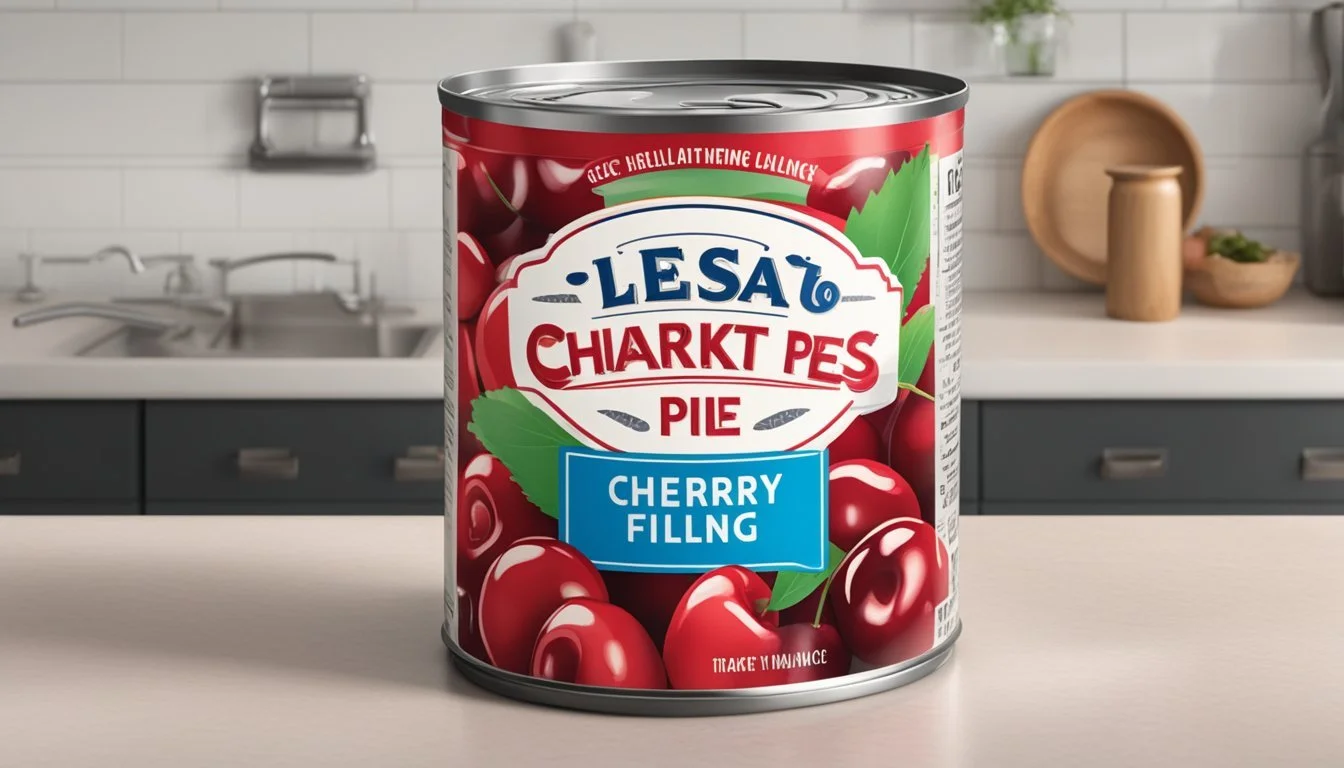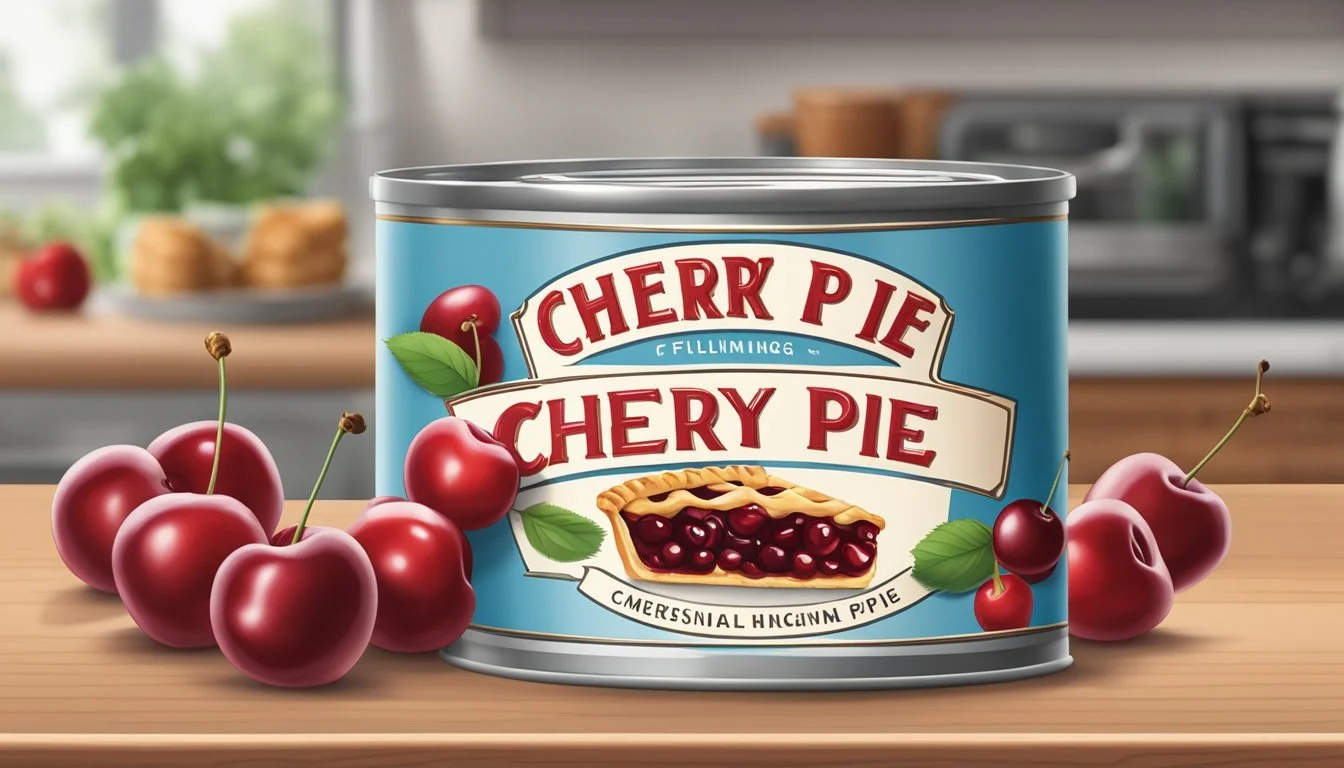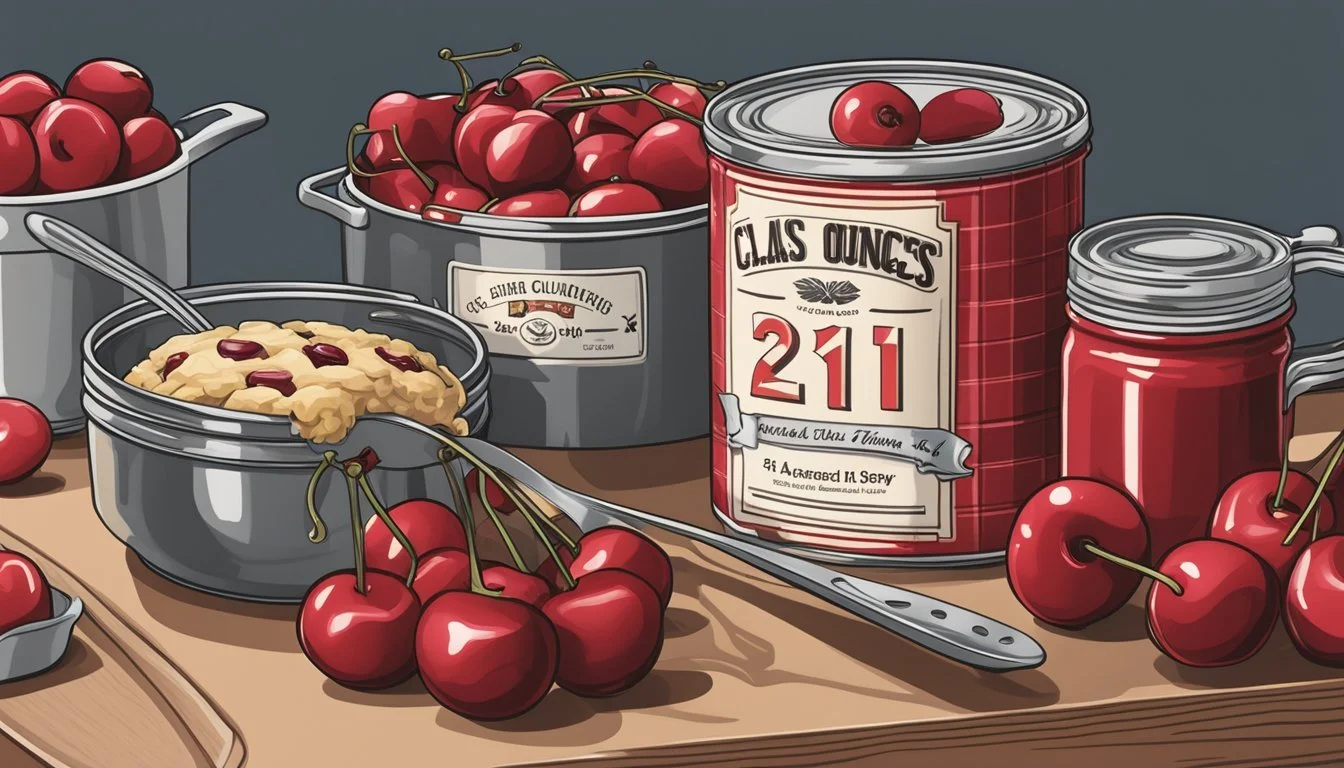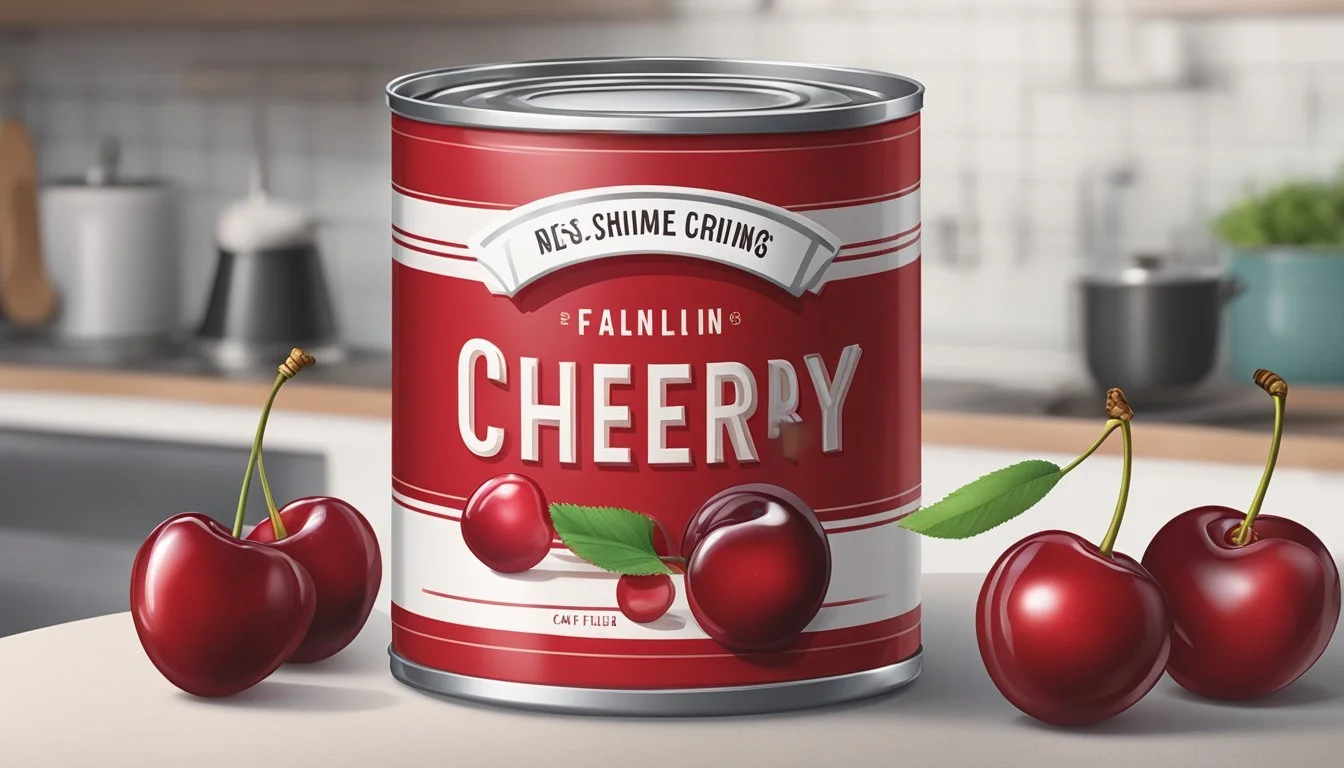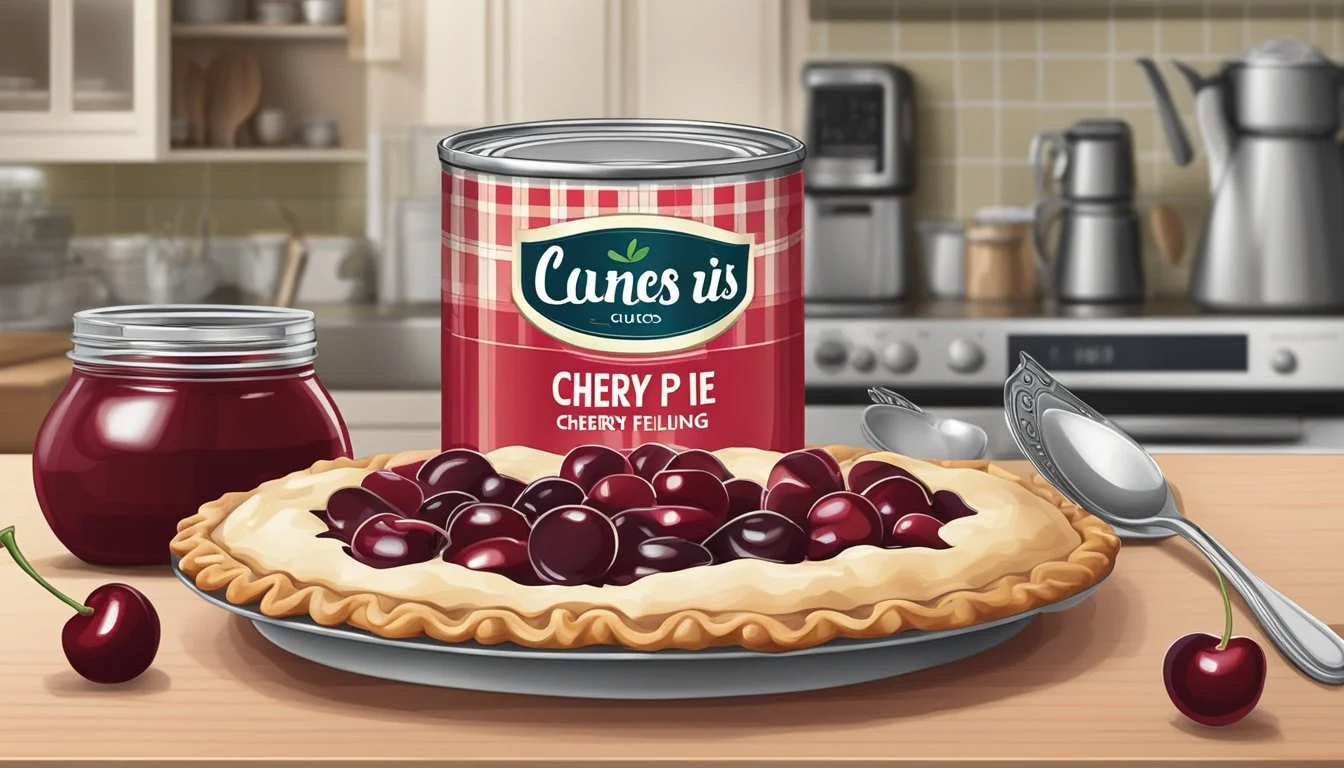How Many Ounces in a Can of Cherry Pie Filling
Understanding Can Sizes
When making a cherry pie, one of the key ingredients is cherry pie filling. Determining the amount of cherry pie filling needed for a recipe is essential for achieving the perfect balance of fruit and crust. Commercial cans of cherry pie filling typically come in a standard size which holds about 21 ounces of filling. This amount is generally sufficient for a 9-inch pie, providing a hearty layer of cherries in each slice.
In the world of desserts (What wine goes well with desserts?), getting the recipe right is crucial, and the quantity of filling can greatly impact the final outcome of the pie. For larger pies or for bakers who prefer their pies to be brimming with fruit, additional cans may be required. It's common practice to use two cans of cherry pie filling for a fuller pie, especially when using larger pie tins such as a 10-inch or 12-inch size.
The ease of using canned cherry pie filling allows bakers to focus on perfecting the crust and presentation. Baking a cherry pie can be a simple process with the prepared filling, which also includes the added benefit of a consistent flavor and texture. For those who choose to enhance their pie, additional ingredients like almond extract or a homemade crust can personalize the dessert, turning a classic cherry pie into a signature treat.
Understanding Pie Fillings
Pie fillings are integral to creating the perfect dessert experience, offering a balance of fruit, sugar, and spices that is carefully preserved in cans for accessibility and ease of use.
History of Pie Fillings
The practice of using fruit fillings in desserts traces back to the origins of pies themselves, with evidence suggesting pies were made by ancient Egyptians. However, it was the Greeks who are credited with creating the first fruit pies. The preservation of fruit fillings for off-season use and for ease when making a homemade pie has evolved over time, seeing significant advancements in canning technology and mass production.
Types of Pie Fillings
Pie fillings come in a multitude of flavors, including but not limited to:
Sweet cherries: often used in cherry pie and known for their vibrant color and sweet taste.
Tart cherries: typically preferred for a more traditional cherry pie flavor.
Blueberry: a common choice for pies with a balance of sweet and tangy.
Strawberry: offers a sweet and aromatic flavor profile.
Peach: provides a succulent and fragrant pie filling.
Apple: a classic pie filling with variations from tart to sweet, depending on the apple variety.
Raspberry, blackberry, and other berries: bring a mix of sweet and tart flavors, often with more noticeable seeds.
Canned pie fillings often combine fruit with sweeteners, thickeners, and sometimes certain spices to enhance the dessert's flavor.
Role in Desserts
Pie fillings are not just for pies; they serve a versatile role in many desserts. They may be used as toppings or layers in:
Cakes
Cheesecakes
Pastries
Yogurts
Ice creams
The role of pie filling is to inject rich, concentrated flavor that complements the sweetness and texture of the dessert base, whether it’s a flaky pie crust or a delicate sponge cake.
Health Considerations
While convenient, some canned pie fillings can be high in sugars and may contain preservatives. For those making a homemade pie and looking to control the ingredients, making the filling from scratch can be a healthier alternative. Fresh fruit, adjusted sugar levels, and the choice to include natural spices and butter can make homemade fillings a desirable option for health-conscious individuals.
Cherry Pie Filling Basics
Cherry pie filling is an essential ingredient for creating the classic dessert, and understanding the types of cherries and key ingredients can enhance the pie-making experience. The market offers canned options that are convenient, while homemade versions give a more personal touch to the pie.
What is Cherry Pie Filling?
Cherry pie filling typically consists of cherries, sugar, and a thickening agent such as cornstarch, crafted to offer a balance of sweetness and a hint of tartness. There are two primary types of cherries used:
Sweet Cherries: Often found in canned cherry pie fillings, they contribute a naturally sweet flavor.
Tart Cherries: Preferred for their tangy taste, tart cherries are frequently used in homemade fillings.
The filling can be used not just in pies, but also as a topping or ingredient in various desserts.
Key Ingredients
Cherry pie filling ingredients are crucial for achieving the right flavor and consistency. Below is a breakdown:
Cherries: The star of the filling, whether canned or fresh, they can be sweet or tart depending on the desired outcome.
Sugar: Adjusted according to the sweetness of the fruit, it enhances the cherry flavor.
Cornstarch: A thickener that gives the filling its expected viscosity.
Lemon Juice: Often added to balance the sweetness and provide a hint of acidity.
Spices: Cinnamon is a common addition for additional warmth and complexity.
These components mingle to create the vibrant, thick syrup that characterizes cherry pie filling. Homemade versions may vary with the addition of other ingredients such as almond extract or different thickening agents.
Baking Essentials
When baking with cherry pie filling, the essentials come down to three pivotal components: a well-prepared crust, mastered filling and baking techniques, and the art of serving your creation with fineser.
Preparing the Crust
Achieving a flaky pie crust begins with cold, unsalted butter or oil cut into the flour to create small, pea-sized pieces. This mixture should be combined just until it resembles coarse crumbs. Incorporating ice water tablespoon by tablespoon is key to forming a dough that holds together without becoming overly wet. Once formed, the dough must chill in the refrigerator for at least an hour before shaping into the pie plate for the best results.
A double crust pie means one crust at the bottom filled with cherry pie filling and another crust on top. The top crust can be a solid layer or lattice-work, depending on the baker's preference. To prevent the reformation of gluten and to maintain a tender crust, it is important that the dough remains at room temperature only as long as necessary when rolling and shaping.
Filling and Baking Techniques
Expertly baked cherry pies require much more than simply pouring the filling into the crust. To enhance the canned filling, consider adding almond extract, cinnamon, or vanilla, and thickening it if necessary with cornstarch. For a smooth filling, one should ensure the consistency is akin to a thick pudding but still pourable.
When assembling the pie, an egg wash can be brushed on the bottom crust to create a barrier against the filling, sealing it and helping to maintain crispiness. The filling should be added to the crust just before it will go into the oven to prevent sogginess. Baking times vary, but a general guideline is to bake until the crust is a golden brown color. Covering the edges of the crust with foil can prevent them from burning.
Serving and Presentation
The presentation of a cherry pie can transform it from a homey dessert to an elegant treat. A slice of pie can be warmed and topped with a dollop of whipped cream or a scoop of vanilla ice cream. Adding icing or a sprinkle of granola adds texture and flavor contrast.
Leftovers should be stored properly, protected by foil or in airtight containers, and can often be refreshed by a quick warming in the oven before serving again. Whether served at room temperature or warmed, each slice should be served with care to maintain the integrity of the pie's structure.
Recipes and Variations
When incorporating cherry pie filling in recipes, understanding the balance between sweetness and tartness is crucial. Each recipe can be adjusted according to personal taste, and cherry pie filling can be utilized in various desserts ranging from classic pies to inventive no-bake treats.
Classic Cherry Pie
The quintessential Classic Cherry Pie consists of a flaky pastry filled with a mixture of sweet cherry filling enhanced with a hint of tartness. Key ingredients usually include lemon juice to brighten the flavors, and a dash of vanilla for depth. The cherry filling is typically encased in a pie crust and brushed with an egg wash before baking to achieve a golden-brown finish.
Ingredients:
21 oz can of cherry pie filling
1 tsp lemon juice
1/2 tsp vanilla extract
2 pie crusts (homemade or store-bought)
1 egg (for egg wash)
Creative Twists
Under Creative Twists, chefs may experiment with spices such as nutmeg, ginger, cloves, and allspice to introduce warmth into the pie. For a crunchier texture, some may opt to sprinkle a layer of granola on top for a delightful contrast to the soft filling. Additionally, incorporating nuts into the crust or topping can add a satisfying crunch and nutty flavor.
Spice Blend:
1/4 tsp nutmeg
1/4 tsp ginger
1/4 tsp cloves
1/4 tsp allspice
Textures and Toppings:
Granola
Chopped nuts (almonds, pecans, or walnuts)
Alternative Uses for Cherry Pie Filling
Alternative Uses for Cherry Pie Filling can range from spooning it over ice cream to folding it into cream cheese for a rich topping. No-bake options like chilled cherry cheesecakes also make great use of cherry pie filling, often mixed with condensed milk for a silky, sweet, and tart dessert layer.
Serving Ideas:
Over vanilla ice cream
Mixed with cream cheese for frosting or dip
Condensed milk for no-bake cherry cheesecake
Homemade vs. Store-Bought
The debate between Homemade vs. Store-Bought cherry pie filling usually pivots on considerations of time and taste preferences. Homemade filling allows for customization of sweetness and tartness, while store-bought fills the need for convenience and can be bought in bulk. Jars of homemade cherry pie filling also make for thoughtful gifts and preserve the taste of fresh cherries year-round.
Comparison:
Homemade: Customizable, fresh taste, canning required.
Store-Bought: Convenient, consistent flavor, available in various sizes.
Practical Tips and Tricks
In ensuring the best use of a can of cherry pie filling, one must consider factors such as storage, enhancing flavor and texture, and correct measurements for recipes. These foundational elements support both the longevity and culinary success of the product.
Storage and Shelf Life
Canned Filling: Unopened cans of cherry pie filling should be stored in a cool, dry place and typically last up to 18 months.
Refrigerator: Once opened, transfer any unused filling to an airtight container and store in the refrigerator for up to 3 days.
Freezer: For extended storage, pie filling can be frozen. Use plastic wrap to cover the surface to prevent freezer burn and store for up to 6 months.
Improving Texture and Flavor
Sweeten: If the filling is too tart, sweeten to taste with sugar. Start with 1 teaspoon increments to avoid over-sweetening.
Cornstarch: To thicken a runny pie filling, one can mix in a small amount of cornstarch diluted in cold water before heating the mixture.
Lemon Juice/Zest: A dash of lemon juice or zest can enhance the overall flavor profile.
Pure Vanilla Extract: To add a homemade flavor, incorporate a small amount of vanilla extract to the filling.
Pitting and Preparing Cherries
Fresh Cherries: Fresh cherries should be at the peak of ripeness, firm yet plump.
Cherry Pitter: Utilize a cherry pitter to remove pits efficiently while keeping the fruits intact.
Frozen Cherries: If using frozen cherries, ensure they are thoroughly thawed before pitting and use any expressed juice in the filling to retain flavor.
Conversion and Measurements
Canned Cherry Pie Filling: A standard can contains approximately 21 ounces.
Measuring Fresh or Frozen Cherries:
Cherries Measurement Approximation Fresh Pitted 1 cup 5 to 6 ounces Frozen 1 cup 7 to 8 ounces
Thickening Agent: When using cornstarch as a thickening agent, a rule of thumb is 1 tablespoon of cornstarch to 1 cup of liquid. Adjust as necessary for desired consistency.
Social Engagement and Resources
When it comes to the size and use of canned cherry pie filling, community insights and trusted recommendations can play a pivotal role in informing buyers. Enthusiasts looking to learn more or share their homemade cherry pie experiences turn to social platforms and affiliate resources.
Community Feedback
Facebook, Pinterest, and Instagram are thriving hubs for sharing recipes and tips about cherry pie fillings. Details such as the ounces in standard cans and the quality of different brands are often discussed, reflecting real user experiences. Cooks frequently:
Share images of their homemade cherry pies and the can used.
Post taste test results comparing various fillings, with a focus on the sweetness and texture of the red filling.
Seek and offer advice on creating the perfect pie with sweet cherries.
Affiliate and Product Recommendations
Various cooking sites and blogs often provide affiliate links to recommended cherry pie filling brands. They typically detail the size and quality of the pie fillings they suggest. Here's a concise list:
Homemade Cherry Pie: Links to tutorials on making pie from scratch, highlighting the difference in taste from canned fillings.
Canned Cherry Pie Filling: Specific products preferred for their flavor profile, such as dark or light sweet cherries.
Learn More: Directs readers to in-depth reviews and product comparisons.
These resources benefit users by offering first-hand knowledge and practical endorsements of cherry pie filling products, enabling informed purchasing decisions.
Conclusion
The standard size for a can of cherry pie filling in the United States is 21 ounces. This is the typical measurement used for pie recipes requiring a single can. However, sizes can vary, and manufacturers may offer different quantities. When preparing a cherry pie, it's crucial to be attentive to the specific recipe's requirements.
Here are some common can sizes:
Regular Can: 21 ounces
Smaller Can: 15-16 ounces
Larger Can: 28-30 ounces
For a 9-inch pie, typically two 21-ounce cans are sufficient. If using other can sizes or if the recipe deviates from the norm, adjustments to the number of cans needed will be necessary. Always read the label on the can for guidance.
It's also essential to consider the depth of the pie dish and whether the recipe includes additional ingredients that may affect the volume of filling needed. Some recipes might call for extra thickening agents or other flavors that interact with the filling.
Those who are conscious about sugar content should be aware that canned cherry pie fillings often contain added sugars and thickeners. One may choose to adjust recipes accordingly to achieve the desired taste and consistency.
Remember, while 21 ounces is standard, the best approach is to verify the requirements of the specific cherry pie recipe being used to ensure a delicious result.
References
When determining the quantity of cherry pie filling required, one must consider the size of the pie tin being used. Generally, a 9-inch pie tin requires approximately two cans of cherry pie filling. It should be noted that can sizes can vary, with a common size being 21 ounces for standard cherry pie filling.
For larger pie tins, such as a 10-inch or 12-inch, the quantity needed increases, and one may require three to four cans. It is advisable for consumers to consult the instructions provided on the can, which typically offer guidance on the appropriate amount of filling for different pie sizes.
Standard Can Size for Cherry Pie Filling: 21 ounces
9-inch Pie Tin: 2 cans (42 ounces total)
Larger Pie Tins: 3 to 4 cans
One search result mentioned the use of two different types of canned cherries, 15-ounce and 14.5-ounce cans respectively, illustrating that not all brands adhere to the 21-ounce standard.
Here are some specific references from the search results:
Chef's Resource: Asserts the need for two cans for a 9-inch pie tin, with more required for larger tins.
Hummingbird High: Recipes may use varying sizes such as a 15-ounce and a 14.5-ounce can of cherries.
It should be emphasized that the specific requirements for cherry pie filling can also depend on the recipe used, and bakers should always verify the details for their specific baking venture.

